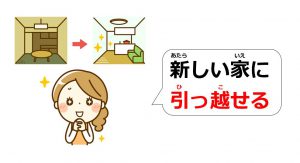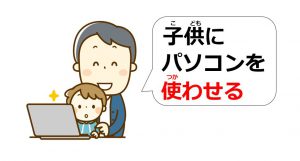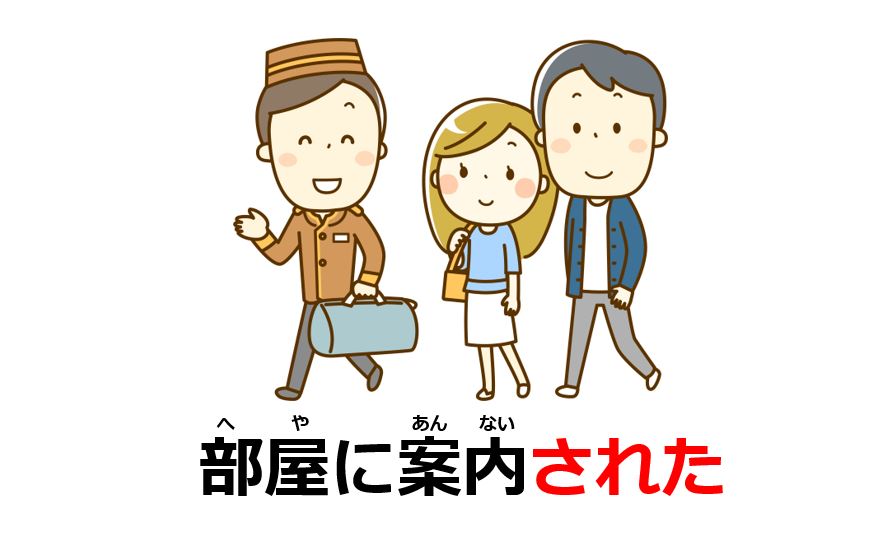Last time, you learned how to express potential like “日本語を話せる (I can speak Japanese)” and “漢字を書くことができる (I can write kanji).” In Japanese, you can express various things by conjugating verbs. Here, you will learn another form: the Japanese passive form.
Explanation for How Japanese Passive Form Works
| Table of Contents Conjugation Rule Basic Sentence Pattern Indirect Passive Sentences |
People may not encourage you to use passive sentences in English. By contrast, it plays an important role in Japanese. You can see it in a lot of situations. The frequency is one of the major differences between English and Japanese.
Conjugation Rule
Ru-verb: To Replace ru with rareru
| Plain | Passive | |
|---|---|---|
| To see, look, watch | 見る (miru) | 見られる (mirareru) |
| To wear | 着る (kiru) | 着られる (kirareru) |
| To eat | 食べる (taberu) | 食べられる (taberareru) |
| To answer | 答える (kotaeru) | 答えられる (kotaerareru) |
U-verbs: To Replace u with areru
| Plain | Passive | |
|---|---|---|
| To write | 書く (kaku) | 書かれる (kakareru) |
| To speak | 話す (hanasu) | 話される (hanasareru) |
| To stand | 立つ (tatu *tu = tsu) | 立たれる (tatareru) |
| To drink | 飲む (nomu) | 飲まれる (nomareru) |
Two Exceptions
| Plain | Passive | |
|---|---|---|
| To do | する (suru) | される (sareru) |
| To come | 来る (kuru) | 来られる (korareru) |
You may have noticed that the passive form of ru-verbs and 来る are exactly the same as the potential form. It is said that that’s why people omit ら when they use the potential form in order to distinguish the two forms. That is to say, you cannot omit ら from the passive form. If you would like to use the potential and the passive form at the same time, you have to utilize another form: …ことができる. For example, if you say “I could be praised” in Japanese, you can say “褒められることができた.”
[adsense]
Basic Sentence Pattern
| 田中さんは | ボブに | 質問を | した / しました |
| Topic / Subject | Target | Direct Object | Verb |
| Tanaka-san asked Bob a question. | |||
| ボブは | 田中さんに | 質問を | された / されました |
| Topic / Subject | Doer | Direct Object | Verb: Passive Form |
| Bob was asked a question by Tanaka-san. | |||
The first example is written from the Tanaka-san’s point of view while the second one is written from the Bob’s point of view. The structures are similar, but the function of the particle に has changed from “targets” to “doers.”
| お父さんに叩かれ(た / ました)。 [I] was slapped by [my] farther. |
| LinkedInがMicrosoftに買われ(た / ました)。 LinkedIn was bought by Microsoft. |
| お母さんに褒められ(た / ました)。 [I] was praised by [my] mother. |
| 彼氏にプロポーズされ(た / ました)。 [I] was proposed by [my] boyfriend. |
When verbs don’t indicate physical contact, the particle に can be replaced with the particle から. Here, it is applicable with the third and the fourth example.
| お父さん に・から 叩かれ(た / ました)。 |
| LinkedInがMicrosoft に・から 買われ(た / ました)。 |
| お母さん に・から 褒められ(た / ました)。 |
| 彼氏 に・から プロポーズされ(た / ました)。 |
| 私は / が | テストの結果を | 先生に | 褒められ(た / ました) |
| Topic / Subject | Direct Object | Doer | Verb: Passive Form |
| I was praised for the result of the test by the teacher. | |||
This is another basic sentence pattern in passive sentences. Verbs sometimes indicate particular things, e.g. I was praised vs. I was praised for my courage. In such cases, you can utilize the particle を.
| 私はやる気を怒られ(た / ました)。 I was scolded for [my] motivation. |
| 私は肩をお父さんに叩かれ(た / ました)。 I was slapped on my shoulder by [my] father. |
Advanced Topic: Proper Particles
In cases where the particle に may cause confusion, you have to substitute other words for it. There are two options: から and によって. When the verb requires a target (recipient), you need to use から because using the same particle multiple times won’t make sense to listeners.
| 花が父 に・から 母に渡され(た / ました)。 Flowers were given from [my] father to [my] mother. |
| ルールが先生 に・から 生徒に説明され(た / ました)。 The rule was explained from the teacher to the students. |
When the verb implies to create something for someone, you have to use によって to express doers because に can indicate “targets.”
| この歌は秋元さんに・によって 書かれ(た / ました)。 This song was written by Akimoto-san. |
| この椅子はおばあちゃん に・によって 作られ(た / ました)。 This chair was made by [my] grandmother. |
If you use the particle に, it may mean like this;
| この歌は秋元さんに書かれた。 This song was written for Akimoto-san. |
| この椅子はおばあちゃんに作られた。 This chair was made for [my] grandmother. |
Indirect Passive Sentences
| 夜に | 赤ちゃんが | 泣いた / 泣きました |
| Specific Time | Subject | Verb |
| The baby cried at night. | ||
| 夜に | [私は] | 赤ちゃんに | 泣かれ (た / ました) |
| Specific Time | [Topic / Subject] | Doer | Verb: Passive Form |
| [I] was (disturbed) by the baby who cried at night. | |||
From the baby’s point of view, the verb: “泣く to cry” is intransitive and an independent action. However, from your point of view, you were greatly affected by his/her crying. This is the case where the meaning of the active sentence will differ from the passive sentence. Actions indirectly affect someone. That’s why we call it “indirect passive sentences.” Be careful; this grammar generally denotes a negative connotation. *Speaker’s feelings may not be expressly mentioned, so you may need to guess based on context. The verbs in parenthesis are our assumptions.
| 日本語をとても早く話され(た / ました)。 [I] was (shocked) by [him/her who] spoke Japanese very fast. |
| レッスンで生徒に寝られ(た / ました)。 [I] was (disappointed) by the student who took a nap in the lesson. |
Intransitive Verbs VS. the Passive Form of Transitive Verbs
| コップが(割れた / 割れました)。 The cup [naturally] broke. |
| コップが(割られた / 割られました)。 The cup was broken [by someone]. |
They express very similar things. However, when you use passive sentences, you indicate the presence of doers. As you learned here, intransitive verbs don’t have the passive form unless they indirectly and badly affect someone.
When Should Passive Sentences Be Used?
When Speakers Are Recipients of Actions
| 知らない人が私に道を(聞いた / 聞きました)。 => Unnatural! |
| 私は知らない人に道を(聞かれた / 聞かれました)。 I was asked the way by a stranger. |
In Japanese, sentences sound natural when speakers are subjects. In this case, unless you really want to emphasize the stranger, you should use the passive sentences.
When You Use Compound Sentences
| みんなが彼女を愛して、彼女は幸せ(だった / でした) => Unnatural! |
| 彼女はみんなに愛されて、幸せ(だった / でした)。 She was loved by everyone and happy. |
You will learn how to make compound sentences in other lessons. For now, please focus on the concept. In Japanese, subjects in main and subordinate clauses should be the same.
Summary
- The conjugation of ru-verbs and 来る is the same as the potential form.
- Doers can be expressed by に, から, and によって.
- Intransitive verbs can be the passive form if it badly affects someone.
As we mentioned, passive sentences are very important in Japanese. People encourage you to use it in writing unlike English because indirect expressions are often preferred in our culture. Please try to understand the usages without doubt here. Next, you will learn a related form: Japanese causative form.

Japanese Potential Form: (ら)れる and ことができる

Japanese Causative Form with the particle に and を



